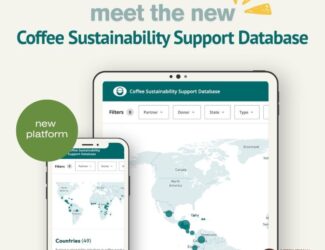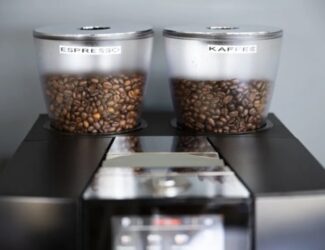
Challenges and Opportunities in Expanding Across Europe’s Coffee Market
Dubai,February 22, 2024(QW):In 2022, the European Union consumed a staggering 2.54 million tons of coffee, representing 24% of global consumption. The coffee market in Europe is undeniably significant, but its complexity and fragmentation pose significant obstacles for roasters looking to expand.
Many of the world’s largest roasting companies, including family heritage brands such as Lavazza, Ilyi, Dauwe Egberts and Tshibo, have their roots in Europe. However, the diversity of cultures, operational and regulatory aspects makes expansion across the continent a challenge.
Despite strong demand, expanding into Europe is not as easy as it may seem. Whether it’s European chains looking to expand into other parts of the continent or American roasters looking to tap into an entirely different market, the options need to be carefully considered.
One of the main challenges is the diversity of individual coffee cultures, which cannot be generalized across Europe. The Nordic countries of Europe, for example, boast thriving third-wave coffee scenes, with innovative roasters whose trends are largely shaped in this part of the continent. Scandinavia, for example, played a major role in the development of modern filter coffee culture and is often credited with popularizing light roasting. Likewise, many cities in the UK, such as London, boast a strong specialty coffee scene.
Eastern Europe, meanwhile, is significantly different. While some major cities here are experiencing a booming specialty coffee scene, many countries in the region are still considered emerging markets with low individual consumption compared to other regions of the continent.
Meanwhile, in some Western European countries such as France and Austria, tradition still plays an important role and, in some cases, hinders the growth of third wave coffee culture. For example, Parisian café culture is renowned throughout the world, and the term “French Rise” reflects the widespread preference for dark-roasted coffee.
Viennese coffee shops have even been recognized by UNESCO as an intangible part of the country’s cultural heritage, but they are known for their drinks that are more in line with traditional Italian espresso and cappuccino culture than anything resembling specialty coffee.
In addition to these regional cultural changes, some markets in Europe are much more price sensitive than others. An espresso in London can cost over £4, which may be a realistic price point for specialty coffee chains looking to expand. But in most regions of Italy, an espresso costs around €1, making it a difficult environment for specialty coffee brands to innovate and thrive.
“The European coffee market is quite diverse, and I would say there are different coffee drinking cultures, if not by country, then certainly by region,” says Ola Brattas, import and roasting manager at Kaffebrenneriet, a chain of coffee bars and roasters. companies based in Norway.
Coffee roasters often develop a sense of cultural identity that reflects their origins. This may make it difficult for them to expand their market into regions where consumers may not identify with their brand or roasting style.
This is in contrast to coffee roasters in the US, where regional expansion faces far fewer cultural barriers and businesses can access the entire population of the country with relative ease. There are also certain standards specific to the US, such as drip coffee, which is common to many different regions.
Coffee culture aside, there are other barriers for roasters looking to expand their operations in Europe. Language is one of them – a different approach is required to expand between neighboring countries that may be smaller in size than US states. There are also differences in currencies.
Additionally, the U.S. as a whole provides greater access to capital markets, venture capital funding, and investment opportunities that can support scaling a coffee roasting business. In contrast, obtaining funding that can help a roaster expand its reach overseas is often perceived as a more difficult task in European countries.
Ultimately, the fragmented structure of the coffee market in Europe not only poses a challenge when trying to attract such a large and diverse audience, but operational differences such as these make expansion across the continent a costly endeavor. A culturally sensitive approach to expansion that takes into account what is important to consumers in each country can, however, lead to positive results.
Europe’s heterogeneous structure may seem like a challenge for roasters looking to scale internationally, especially compared to the relatively unified regulatory framework of the United States.
“The fact that Europe is made up of many countries and the US is made up of one country makes it easier for roasters in the US to expand state by state than for roasters in Europe to do the same across national borders,” says Ola.
Although there are federal and state regulations, they are generally perceived as simpler compared to the variety of laws in various European countries. And while the European Union can create a relatively consistent regulatory environment for roasters looking to scale, this is far from eliminating the variability between different countries.
For example, VAT rates, excise duties and other tax-related issues vary from country to country within Europe, affecting the pricing and financial planning of coffee roasters looking to expand across the continent.
Likewise, environmental regulations, labeling, food safety, and health and safety regulations vary depending on the country in which a business chooses to operate. For example, the Working Time Directive in France, Germany and Spain states that employees are entitled to minimum daily and weekly breaks with a maximum of 48 hours per week. In contrast, the UK allows employees to opt out by allowing them to work longer. This has implications for how a roasting business manages its staff and associated costs.
In addition, enforcement practices and penalties for non-compliance with health and safety standards vary widely. France, for example, sends thousands of cases to prosecutors every year, with high levels of fines and prison sentences for violations. In contrast, the UK’s OSHA prosecutes fewer violations but with a high conviction rate, and fines in Germany can reach up to €500,000 for willful violations.
This is just the tip of the iceberg in terms of regulatory differences between the UK and other European countries. Brexit has also been a significant setback for roasters looking to expand into one of Europe’s largest consumer markets. This type of logistical and regulatory schism differs significantly from the US, where federal regulation provides a much more unified framework.
Ultimately, Europe is a multifaceted and fragmented market that presents many scaling challenges for roasters. But it’s also the largest market with perhaps the richest history of coffee and the most consistent demand, making it a worthwhile effort to enter – no matter the challenges.
- By : Qahwa World
- On :
Latest Posts
- How Digitalisation Is Transforming the World of Coffee — From Bean to Brew
- All Set for Latin America’s Premier Coffee Symposium in El Salvador
- Cup of Excellence: The World’s Most Prestigious Coffee Award Explained
- New Global Tool Maps Sustainability Initiatives Across Coffee-Producing Countries
- Katerina Borodich: Brewing a New Coffee Culture in Dubai—With Logic, Soul, and a Startup Spirit



